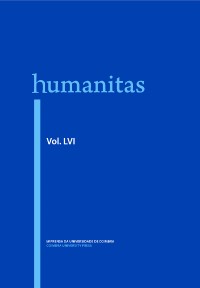Please use this identifier to cite or link to this item:
https://hdl.handle.net/10316.2/28074| DC Field | Value | Language |
|---|---|---|
| dc.contributor.author | López Eire, Antonio | - |
| dc.date.accessioned | 2014-01-27T15:23:29Z | |
| dc.date.accessioned | 2020-10-02T17:03:05Z | - |
| dc.date.available | 2014-01-27T15:23:29Z | |
| dc.date.available | 2020-10-02T17:03:05Z | - |
| dc.date.issued | 2004 | - |
| dc.identifier.issn | 2183-1718 | - |
| dc.identifier.uri | https://hdl.handle.net/10316.2/28074 | - |
| dc.description.abstract | Myth and ritual both act to strengthen or reinforce the identity and coherence of a social group. Myth, as language, is pragmatically a mode of acting in the world. And ritual is, as a symbolic action, a highly political and social activity because its practical and immediate aim is now second to the aim of social and political communication. Myth and ritual share other features, such as analogy, causality, strong paradigmatic character, the use of genealogies and ages for computing time, etc. | eng |
| dc.language.iso | spa | - |
| dc.publisher | Faculdade de Letras da Universidade de Coimbra, Instituto de Estudos Clássicos | - |
| dc.title | Mito y ritual: una aproximación | por |
| dc.type | article | - |
| uc.publication.collection | Humanitas vol. 56 | - |
| uc.publication.firstPage | 329 | - |
| uc.publication.lastPage | 364 | - |
| uc.publication.location | Coimbra | - |
| uc.publication.journalTitle | Humanitas | - |
| uc.publication.volume | 56 | por |
| uc.publication.section | Artigos | - |
| uc.publication.orderno | 13 | - |
| uc.publication.area | Artes e Humanidades | - |
| uc.publication.manifest | https://dl.uc.pt/json/iiif/10316.2/28074/257803/manifest?manifest=/json/iiif/10316.2/28074/257803/manifest | - |
| uc.publication.thumbnail | https://dl.uc.pt/retrieve/12006113 | - |
| item.grantfulltext | open | - |
| item.fulltext | With Fulltext | - |
| Appears in Collections: | HVMANITAS | |
Files in This Item:
| File | Description | Size | Format | |
|---|---|---|---|---|
| humanitas56_artigo13.pdf | 451.17 kB | Adobe PDF |  |
Items in DSpace are protected by copyright, with all rights reserved, unless otherwise indicated.
